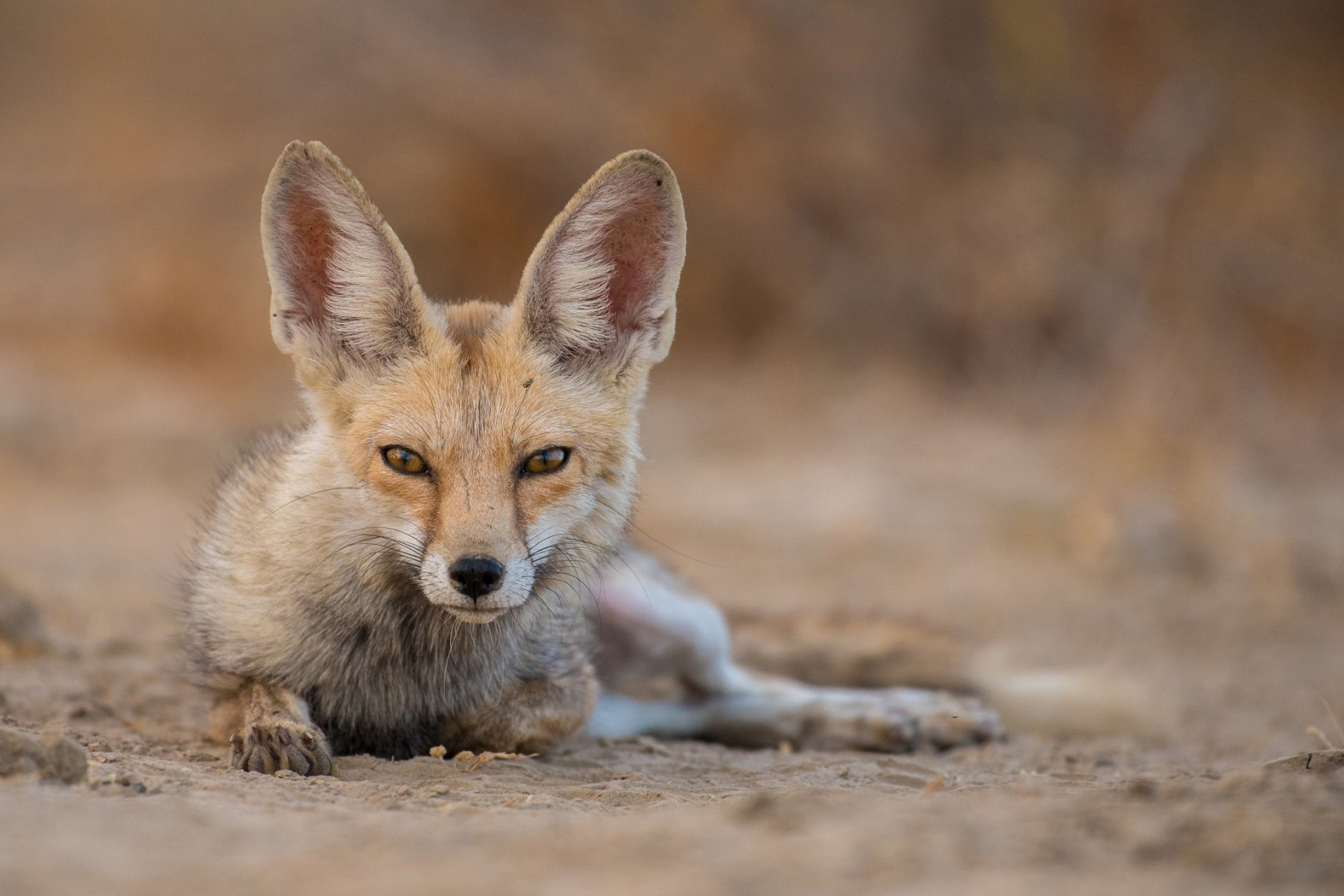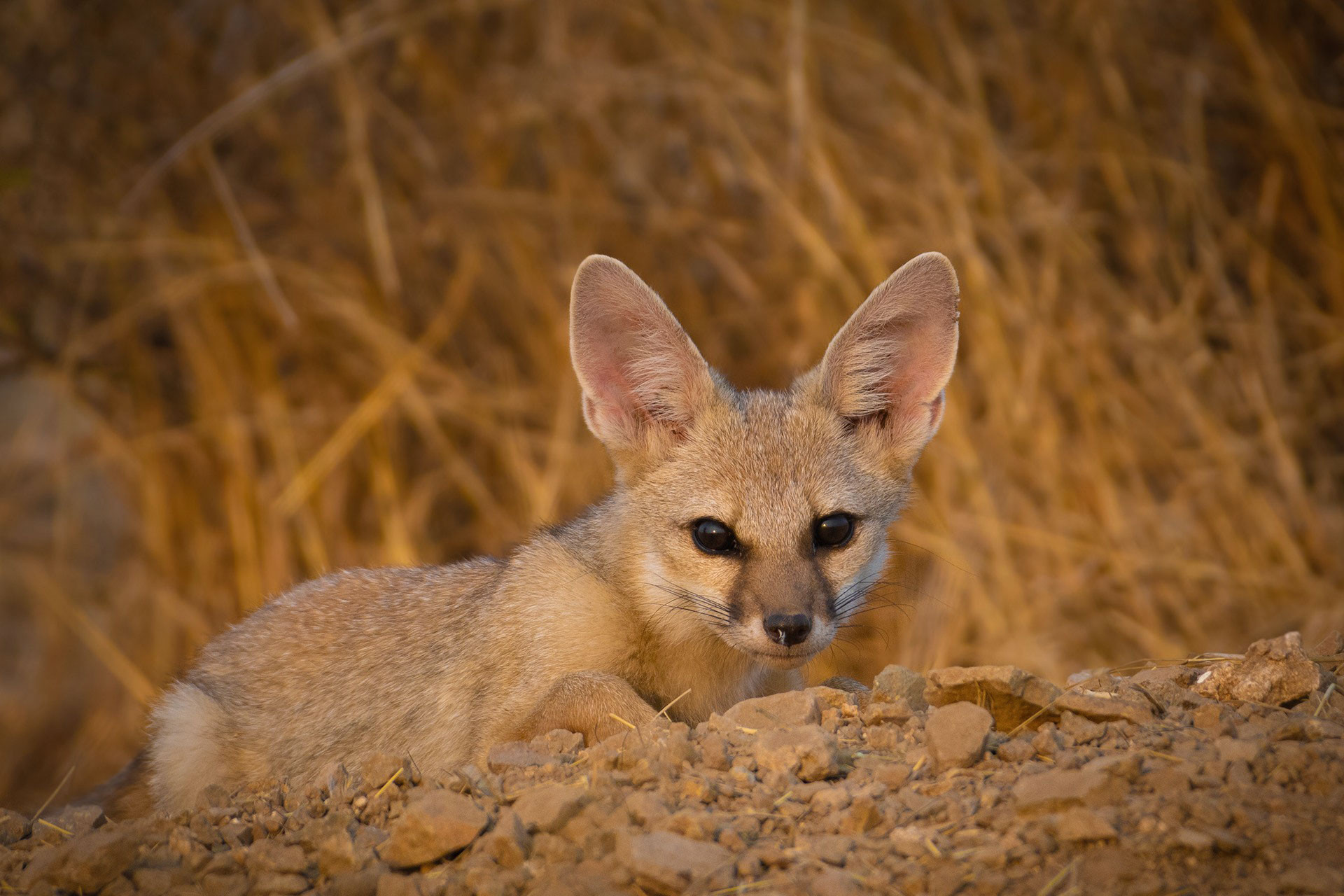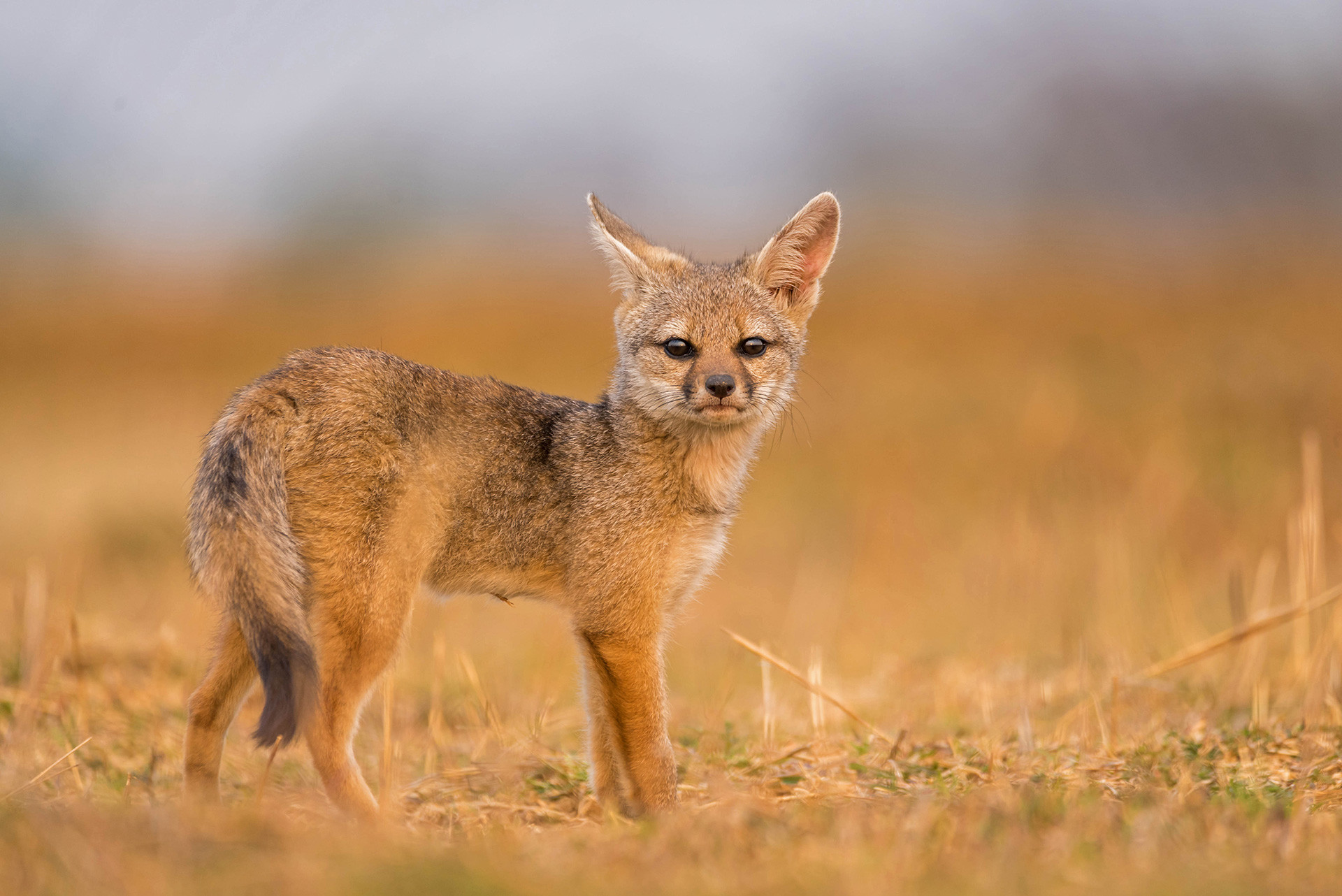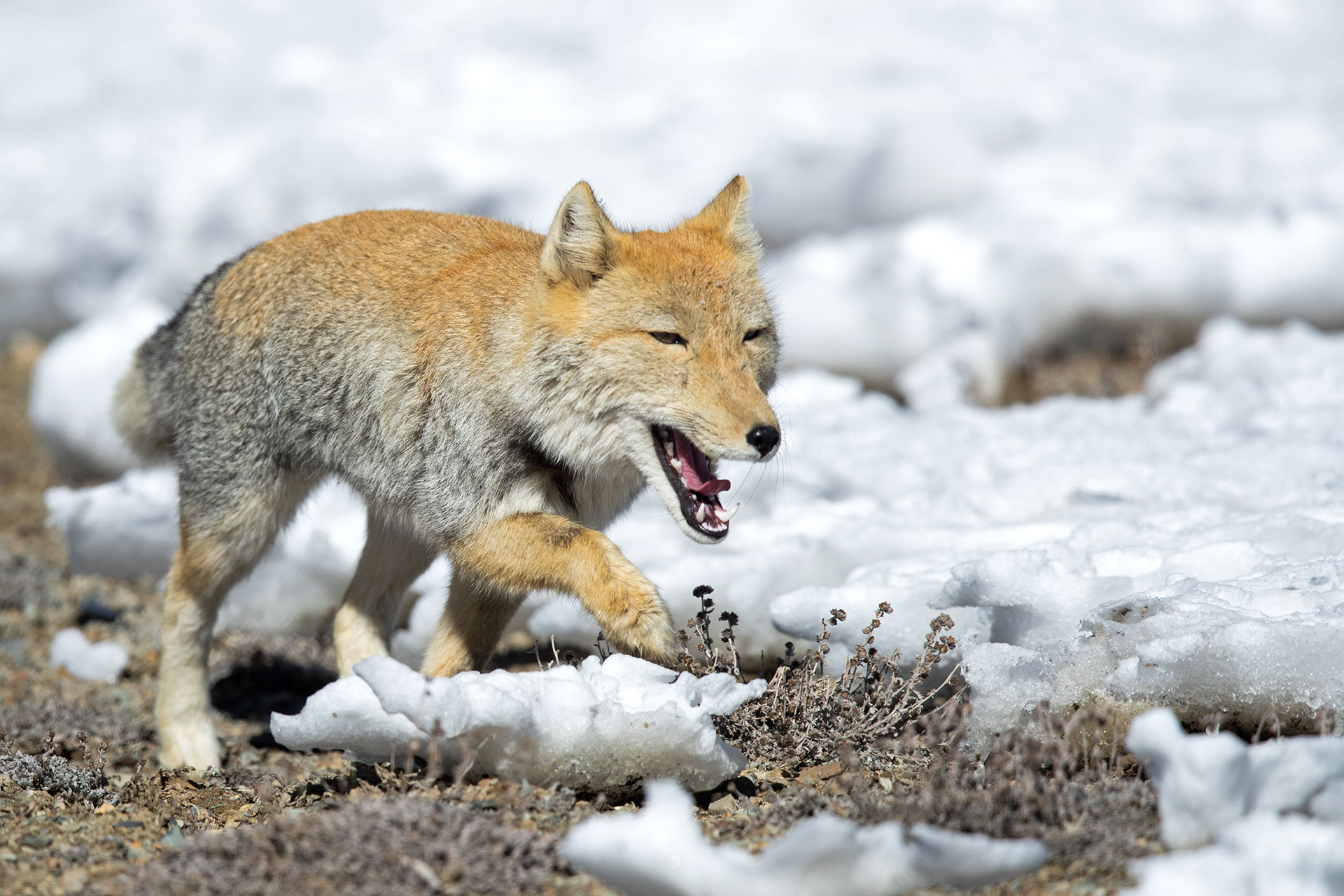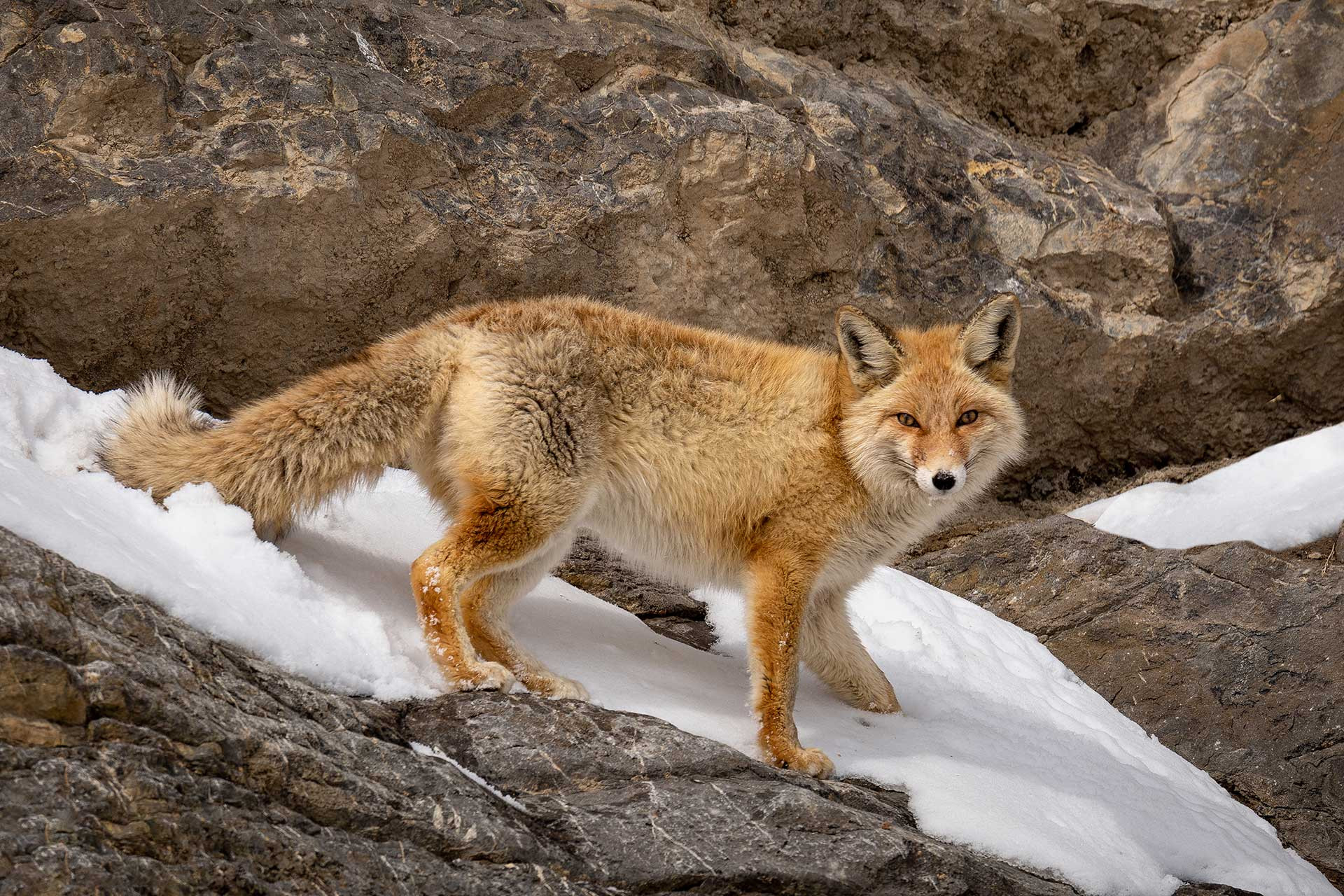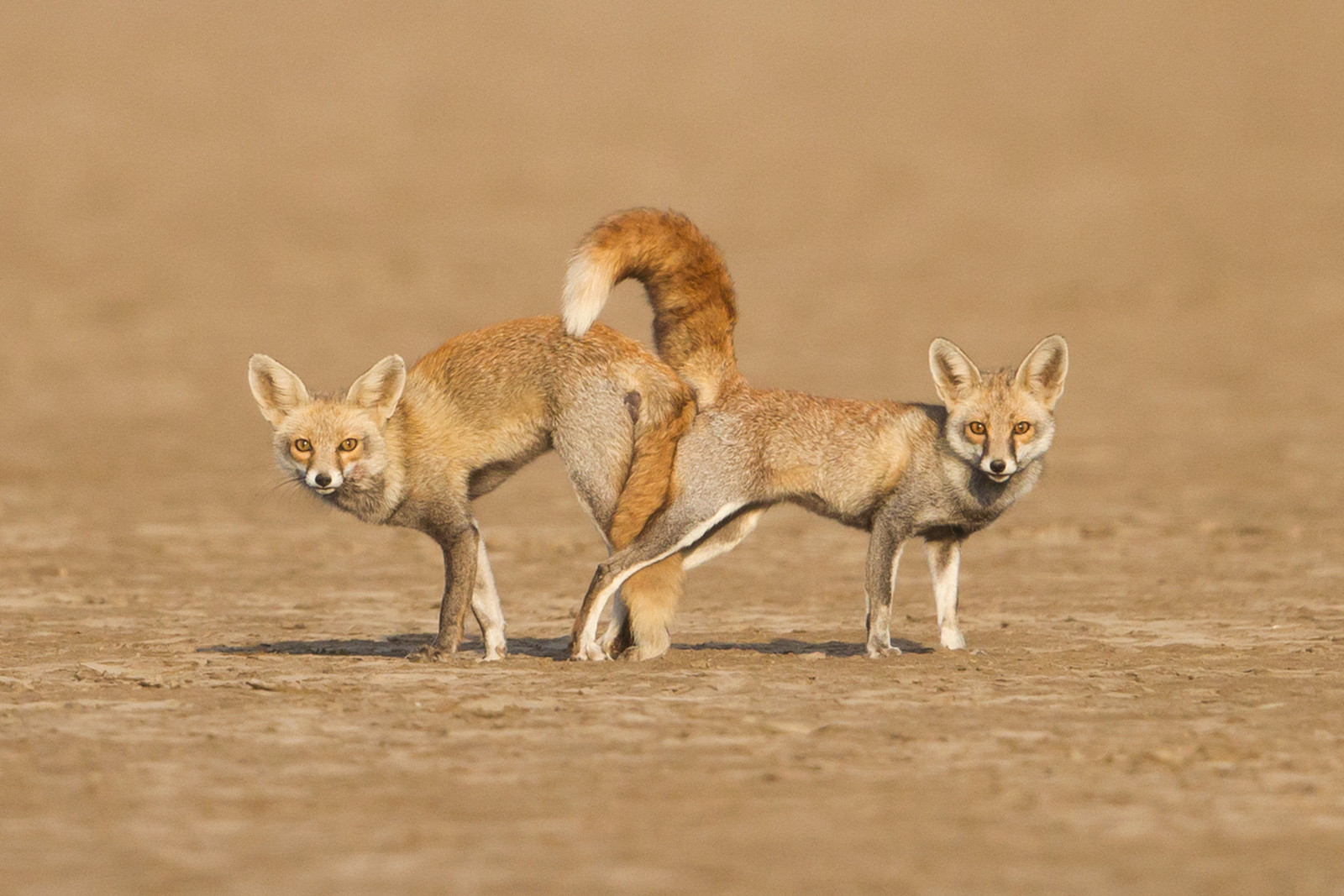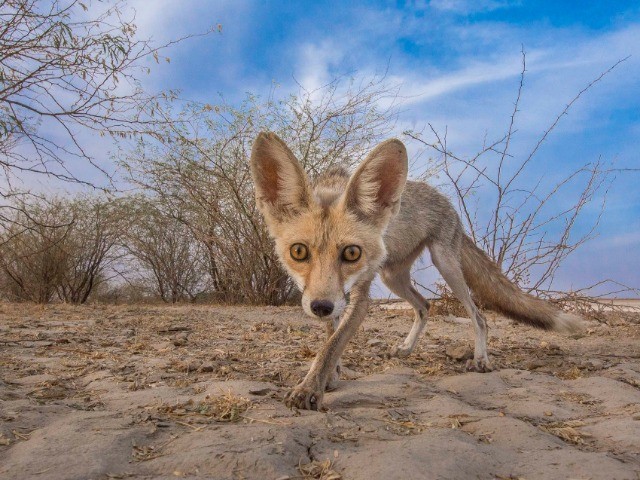What is the first thing that comes to your mind when you think of the fox? Sly, cunning, clever? Sadly, these omnivorous mammals are anything but crafty and cunning. Exceptional at adapting to different habitats and food sources, their resourcefulness has earned them the ire of our moral stories, positioning them as the ideal wrong-doer.
Depending on the species, foxes are present throughout the country, but they fail to elicit the same awe that some of the megafauna species do. Many of the threats that India’s wildlife faces today, such as linear intrusion, plastic pollution, habitat modification and reduction of prey base, also impact the foxes of the region. However, discussions that solely focus on the fox family are not that common, making the canids underrepresented in the conservation space.
In the past, we have shared glimpses of the Desert Fox in its habitat and given you an overview of the wild canids of the country. In this story, we focus on the fox species of India, highlighting the threats they face and emphasising the need for better awareness. In time, hopefully, the word fox will elicit a more positive image of a resourceful canid.
Fox Fundamentals
Members of the Canidae family, foxes are present in all the continents except Antarctica. Foxes are characterised by their pointed ears, narrow snouts and bushy tails. Other members of the Canidae family include dogs, wolves and coyotes. Foxes are further divided into true foxes that belong to the Vulpes genus and other species that fall outside this genera, like the Grey, Bat-eared and Island foxes. Globally there are about 23 fox species distributed across six genera.
Three + Three
India is home to three fox species and three subspecies—the Indian Fox, Tibetan Sand Fox and the Red Fox, which has three subspecies, namely the Desert Fox, the Tibetan Red Fox and the Kashmir Red Fox. India’s fox species occupy a range of habitats, including arid areas, grasslands, agricultural fields and snow-capped mountains. The Red Fox is the most versatile in terms of habitat adaptation and can reside in open drylands as well as high-altitude areas.
Indian Fox (Vulpes bengalensis)
The Indian Fox or the Bengal Fox is found throughout the Indian subcontinent, except in the coastal regions and the Western Ghats. They are usually seen near agricultural areas and human settlements. Although known to be distributed throughout the subcontinent, their occurrence is based on factors such as prey availability. They have long, bushy tails with black tips, which enable in distinguishing them from the similar-looking Desert Fox. They are opportunistic feeders and prey on insects as well as small mammals.
Tibetan Sand Fox (Vulpes ferrilata)
As the name suggests, this fox species resides in the steppes and semi-deserts of the Tibetan plateau. Its range also extends to trans-Himalayan regions of Ladakh and Sikkim and the Mustang region in Nepal. They are small foxes with a narrow muzzle, dense coat and a bushy tail. Compared to their other counterparts, they tend to stay away from human-occupied spaces, preferring upland plains and elevated regions. They primarily prey on Plateau Pikas, as well as other mammals. They also feed on the carcasses of livestock.
Red Fox (Vulpes vulpes)
The highly adaptive Red Fox lives in a range of habitats, including forests, deserts and mountains. They also thrive near human settlements. Similarly, they have a flexible diet and feed on rodents, birds, fruits, vegetables and discarded food. Their tail plays an important role whilst residing in high-altitude regions, using it to cover and protect themselves from the cold weather. Their adaptive nature has often been misconstrued, earning them the ‘cunning’ tag. There are three sub-species of the Red Fox—the Desert Fox, the Tibetan Red Fox and the Kashmir Red Fox or Kashmir Hill Red Fox.
Desert Fox (Vulpes vulpes pusilla)
Desert Fox or the White-footed Fox is one of the most widely-distributed carnivores in the world. They are a subspecies of the Red Fox and are generally found in the desert regions of northwest India. The yellowish-brown coat of the Desert Fox helps them camouflage against the brown hues of their habitat. Desert Foxes mainly feed on rodents and gerbils by digging them out of their burrows or stalking and hunting them. They are known for the complex dens they create during the breeding season to protect newly-born pups.
Tibetan Red Fox (Vulpes vulpes montana)
The Tibetan Red Fox with thick winter fur has been documented in the Ladakh and Himalayan regions. Mixed white and red fur on their muzzle, cheeks, chest and belly is an identifying feature, and the species shares its habitat with Vulpes vulpes griffithii in the Kargil region.
Kashmir Red Fox (Vulpes vulpes griffithii)
In a study published in 2013, the presence of Vulpes vulpes griffithii was documented using camera traps in an area in Kargil close to the Pakistan border. Another study published in 2021 refers to the Red Fox species as the Kashmir Hill Red Fox and mentions its habitat as temperate mountain regions. Prior observations from sightings in Pakistan indicate jet black colouring on the back of their ears and white and orange bands on the coat as identifying features.
Litany of Threats
From habitat loss to the depletion of their prey base, India’s foxes face several threats that impact their populations. The Indian Fox and the Desert Fox, for example, today occupy less than 40 and 50 per cent of their original habitats, respectively. Free-ranging dogs are another significant concern for the Desert Fox, Red Fox and the Indian Fox. A 2009 study on the sympatric domestic dogs and Indian Fox in central India noted that dogs may be preventing foxes from accessing agricultural food sources and human-discarded food. While this is not an issue for foxes that reside in native habitats, it could impact fox populations outside protected areas that are increasingly being altered by anthropogenic influences. Another study published in 2014 looked at the prevalence of viral pathogens in free-ranging dogs and Indian Foxes in the Great Indian Bustard Sanctuary, Maharashtra. The study found that exposure to canine parvovirus (CPV) and canine adenovirus (CAV) was 48 and 52 per cent respectively among foxes, and the animals that had an ongoing canine distemper virus infection showed high rates of mortality. The exposure rates among dogs were greater than 70 per cent for all three viruses. Despite the wide geographic distribution of the Red Fox, local populations are affected by habitat modification, causing a decline in their numbers. Additionally, when they live close to human settlements, the foxes forage from discarded waste and food, exposing them to plastic pollution and other toxic substances.
What is Lacking?
India’s fox populations largely exist outside protected areas, making it difficult to understand the impacts of local threats and implement conservation measures. Also, several myths about the species add to these environmental and anthropogenic threats. A field report on the status of the Indian Fox in the southern parts of the country revealed that in rural areas, foxes are hunted for their perceived medicinal value and use in various rituals, showing a lack of awareness towards the species. Additionally, grassland conservation measures rarely focus on foxes; organisations like The Grasslands Trust are pushing to change this narrative. Before we discuss conservation measures, people need to understand more about the species.
Wild Canids India Project
A citizen science initiative called Wild Canids India Project is documenting foxes and other canids across the country while sharing relevant information about identifying them and understanding their world. If you are interested in contributing to this project or learning more about the foxes of our country, share details of your sightings with the project and read more about their conservation scorecards to gain a comprehensive overview of the species. Foxes play an important role in keeping a check on their prey base. Species like the Red Fox also aid in seed dispersal. It is high time that we took notice of these canids and enabled crucial conservation measures through awareness generation.
Edit: The earlier list mentioned four species of foxes; we have corrected it as three species and three sub-species, after confirming their taxonomy and range distribution in India.

